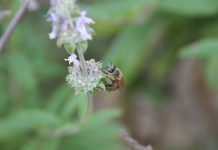
In a world where the boundaries between human habitation and wildlife territories are increasingly blurred, lions are finding themselves in a precarious position.
A new study published in the journal Communications Biology reveals that lions will generally steer clear of areas dominated by humans, resorting to venturing into such territories only when faced with the dire necessities of food scarcity and habitat fragmentation.
This behavior underscores a growing concern over the potential for human-lion conflicts, which not only pose a risk to human lives but also threaten the survival of lion populations.
The expansion of human land use, coupled with the looming challenges posed by climate change, stands to escalate these conflicts.
Kirby Mills, a postdoctoral research fellow at the University of Michigan’s Institute for Global Change Biology, emphasizes the importance of understanding wildlife responses to human disturbances—ranging from agricultural lands to urban areas—as a critical step toward fostering coexistence between humans and large carnivores.
Lions, like many large carnivores, face a delicate balance in human-dominated landscapes. They must weigh the benefits of hunting prey against the potentially fatal risks of human encounters.
This is particularly pertinent when lions target livestock, prompting retaliatory actions from humans that have historically led to significant declines in large carnivore populations.
With nearly half of lions’ current range extending beyond protected areas, these majestic animals are compelled to navigate through human-altered landscapes.
The study, which reviewed data from 31 sites across 40% of the lion’s global range, found that lions predominantly avoid human activity or adapt by hunting at night, especially in areas dense with cattle ranches.
Such behavioral adjustments, while necessary for survival, have far-reaching implications for ecosystem dynamics, influencing competition among species, predator-prey relationships, and overall biodiversity.
The research also highlights how lions’ foraging behavior is influenced by the availability of prey and human presence.
Lions are more likely to venture into higher-risk areas when prey is scarce or when their habitats are fragmented, suggesting a greater willingness to confront the dangers of human proximity under conditions of need.
Amid these challenges, the specter of climate change looms large, threatening to exacerbate resource scarcity for both humans and wildlife.
The unpredictable nature of climate change necessitates a reevaluation of conservation strategies, advocating for a holistic approach that includes securing protected areas, engaging with local communities, and ensuring sustainable coexistence between humans and large carnivores.
As the global climate continues to warm and resources become ever more scarce, the study underscores the urgency of empowering and supporting local communities in conservation efforts.
Only through such collaborative endeavors can the future of lions, and indeed all large carnivores, be safeguarded in an increasingly human-dominated world.
The research findings can be found in the journal Communications Biology.
Copyright © 2024 Knowridge Science Report. All rights reserved.



